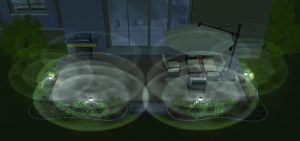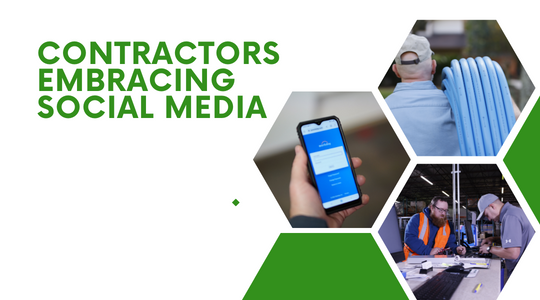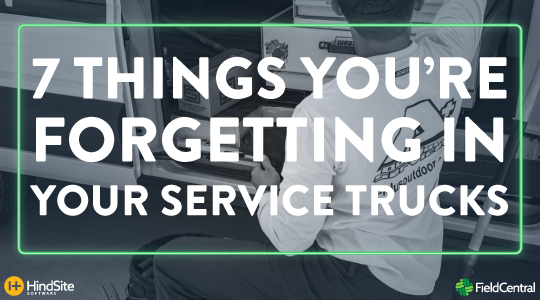Everyone likes to buy things, but no one likes to be sold to. In this business, up-selling a product or service can mean the difference in paycheck size. What is the balance between pushing sales and simply presenting a product? When implemented, these simple tactics can persuade a homeowner to choose a higher quality or add to their project.
The Introduction
The introduction is the ice breaker. The homeowner’s first impression of you can determine how much they buy and if they come back to you for their next project. Use SEE factors when engaging with the homeowner. Smile, have eye-contact, and create enthusiasm. Now, I know it sounds sill but stay with me.
When you smile, its contagious. People are more likely to smile back and are happier based on your attitude. Making the homeowner happy even when they are spending money is what will keep them coming back.
Eye-contact builds trust. When you talk to someone and keep eye contact they know you are being genuine. Avoiding eye-contact is an easy sign that you are not being truthful. Think about it, when you were little and got caught doing something, you looked at the ground or avoided your mom. Looking at someone when they talk tells them you are listening and care what they are saying.
Enthusiasm creates curiosity. You don’t have to be a chipper cheerleader. But, don’t act like you hate your job. Being positive and friendly will cause people to be more interested in what you are doing.
The Short Story
The short story is essentially the, “who you are, and why you’re here.” Letting people know more about the company will give them the educated information to choose you as a contractor. For this step, KISS it. Keep it short & simple. People will drown you out if you talk too much. The following is a good example of a short story:
“Hi thanks for giving us a call. I’m John, the owner of Trees ‘N More. We are a family owned business in the community. We specialize in tree removal, soil restoration and irrigation. What improvements can we help you with right now?”
Notice that John identifies his company, their significance and interacts with the homeowner to identify why they are needed. Using key words like “right now” and “today” frequently, identify to the homeowner your capability for a timely renovation. These key words also use consumer psychology to persuade the consumer to commit to your services today or right now. In addition, these terms create a since that you will be helping them with one thing right now but there may be other jobs in the future.
The Presentation
In the presentation you want to give the homeowner a since of ownership of your services.  For instance, if possible, when selling a Newtone Haven Mosquito Repellent Fixture bring in the fixture and let them hold it. Putting that product in hand will embody their decision to upgrade to the new product. Make sure to put the “lip stick on the pig.” By this, you should make the product look good. Presenting 2-3 key facts about the product will keep the consumer interested but not overwhelmed with all the information.
For instance, if possible, when selling a Newtone Haven Mosquito Repellent Fixture bring in the fixture and let them hold it. Putting that product in hand will embody their decision to upgrade to the new product. Make sure to put the “lip stick on the pig.” By this, you should make the product look good. Presenting 2-3 key facts about the product will keep the consumer interested but not overwhelmed with all the information.
For the Newtone Haven Mosquito Repellent Fixture the facts would be: one fixture covers 120 square foot area; the repellent is odorless, silent and invisible; and the repellent screws in safely to the fixture, making it plant and kid safe.
This is enough information that a consumer can make an educated decision or ask further questions without you being pushy.
The Close
The close is the height of impulse in the sale. Your goal is to close the conversation and begin the work. The Purpose is to get a solid yes or no answer. In order to do so, you need to follow the AAA model. Ask qualifying questions, ask yes-yes questions, and assume the sale. For instance, the homeowner has decided to have a tree removed in the backyard but has not committed to any of your other services. Instead of ending the sale and making a marginal profit, continue the conversation until you get a definite no answer.
AAA would be implemented in this situation in the following way: “I know you only want a tree removed right now, but I notice a lot of bugs and mosquitos in your yard. Do you have a mosquito problem?” –they will respond yes because you have already identified they qualify for this problem– “A lot of people in you area have had this problem. Have you and your kids gotten bit a lot?”–they will respond yes because it is an obvious yes-yes question that creates a correlation–“I can go ahead and install the Newtone Haven Mosquito Repellent Fixtures along your patio to protect your family.”
This conversation is effective because John already knows the owners are having issues  with mosquitos due to it being a popular issue and by observation. It is obvious that mosquitos cause bug bites, causing John to ask the yes-yes question about being bit. then continuing, John assumes the sale of the Nutone fixtures because he has created that need and impulse for the homeowners.
with mosquitos due to it being a popular issue and by observation. It is obvious that mosquitos cause bug bites, causing John to ask the yes-yes question about being bit. then continuing, John assumes the sale of the Nutone fixtures because he has created that need and impulse for the homeowners.
The Rehash
In the sale, you only continue to the rehash if the homeowners have agreed to the initial projects and have not said no to a proposal yet. The goal in this is not to be pushy but, simply inform homeowners of renovations and updates that can benefit them. The rehash doubles cash value because you make more when you sell more. You never stop on a yes and create deals and specials for the customer.
At this point the homeowner has agreed to one or several landscaping renovations. Because they are spending money they want to get a deal for upgrading and adding to their initial needs. Provide deals and specials for upgrading or adding services.
Congrats
 Congratulations! By implementing these steps in a conversation you have increased your sale, profit, customer base and satisfaction of the homeowner. You both will leave feeling like you got the best deal.
Congratulations! By implementing these steps in a conversation you have increased your sale, profit, customer base and satisfaction of the homeowner. You both will leave feeling like you got the best deal.












